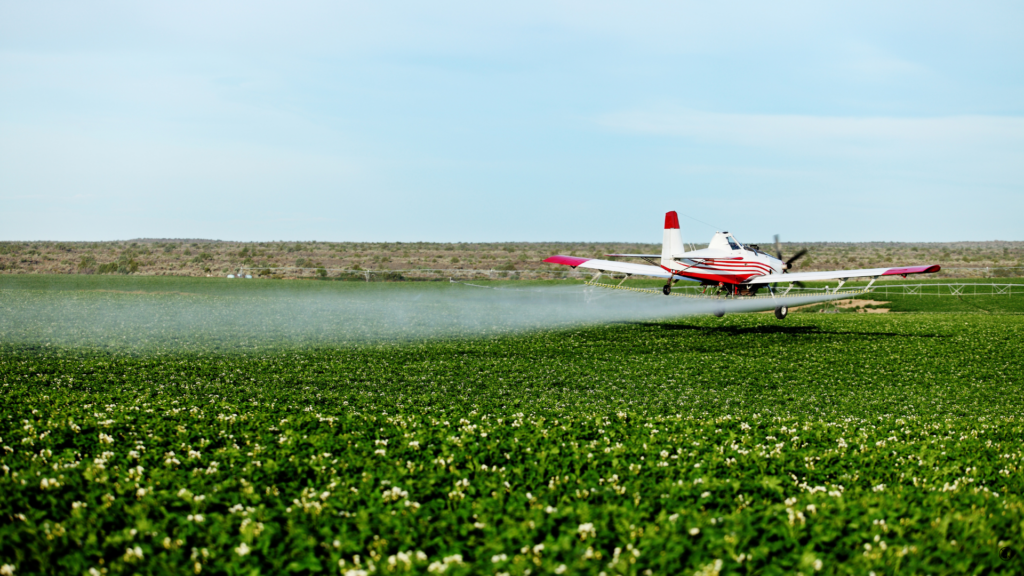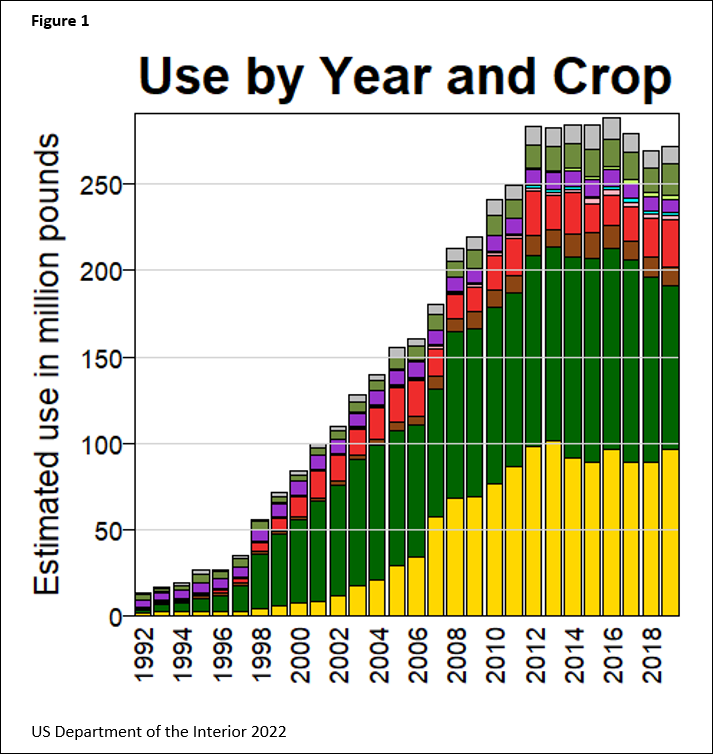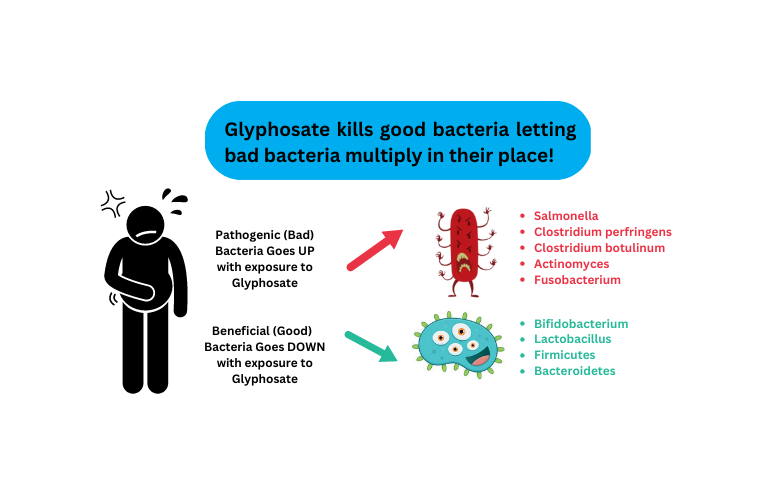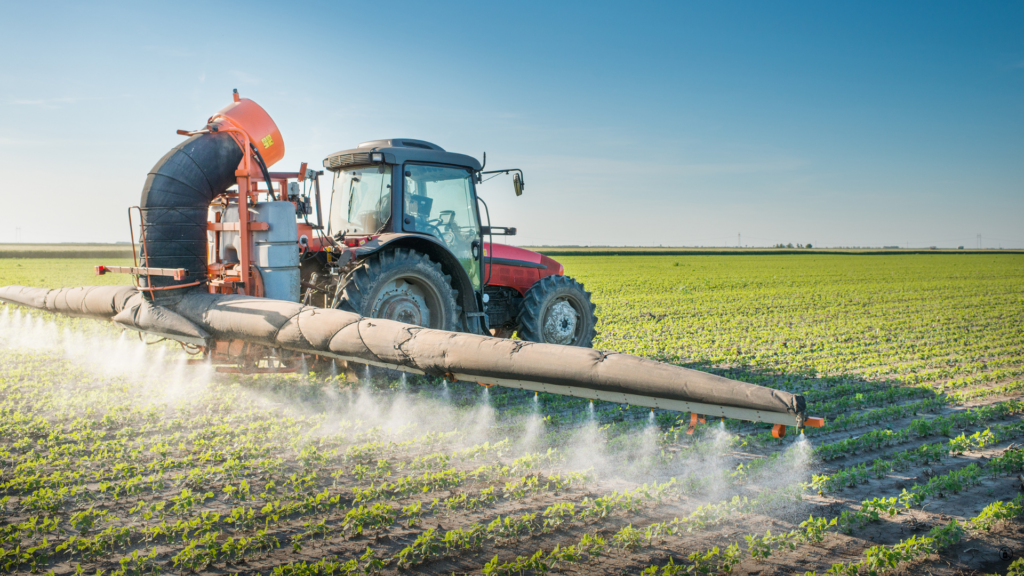Glyphosate Basics: Understanding Pesticide Pollutant Danger
While we hear a lot about toxins in our environment, it can be easy to forget some of those toxins can come even from our own yards. One of the most common and widely used chemicals in both agriculture and residential yards is glyphosate. It is easy to find glyphosate, just take a walk down the aisle of almost any garden center. You can find it on the shelf in herbicide (weed-killing) products like Roundup, Bronco, Glifonox, Kleen-up, Rodeo, and Weedoff. The common usage and pervasive presence of glyphosate in our environment raises concerns about its potential impact on human health.

What is Glyphosate?
Glyphosate is a broad-spectrum herbicide first developed by Monsanto in the 1970s. It works by inhibiting a specific enzyme pathway essential for plant growth, making it highly effective in controlling weeds. Glyphosate-containing products, such as Roundup, are extensively used in both agricultural settings for crops like soy, corn, and cotton, and in non-agricultural areas, including residential gardens, public spaces, and industrial sites.
Glyphosate is also commonly used as a desiccant (drying agent) for non-organic grains, meaning that grains being dried for later use are doused in the chemical. And while rinsing and washing can reduce the amount of glyphosate in foods, it does not remove all traces of the chemical.

Glyphosate’s extensive use means a lot of chances for exposure. It is commonly detected in agricultural fields, but it also contaminates soil, water, and air, spreading far beyond where it is used originally. This widespread presence results in potential pesticide poisoning through various routes, including food consumption, water, and even the air we breathe.
Symptoms of Glyphosate Exposure
Symptoms of glyphosate can vary from person to person and can show up in different severities depending on each person’s unique biochemical make-up. Symptoms also differ between short-term, direct exposure and sustained, long-term exposure.
Short-term Exposure
Acute exposure to glyphosate can cause skin irritation, eye damage, and respiratory issues. These symptoms are particularly relevant for people applying the herbicide or coming into direct contact with treated areas, such as landscapers, farmers, or hobbyist gardeners.
Long-term Exposure
The potential chronic effects of glyphosate exposure are more concerning. Research suggests links between glyphosate and various health issues, including cancer (notably non-Hodgkin’s lymphoma), ALS (also known as Lou Gehrig’s Disease), endocrine disruption, type 2 diabetes, and reproductive problems. Glyphosate has also been implicated in mitochondrial dysfunction, affecting cellular energy production and leading to a range of systemic health issues. Some of the most common symptoms/conditions related to glyphosate exposure include:
Symptoms
- Abdominal cramps
- Blue lips or fingernails (rare)
- Breathing difficulty
- Coma
- Diarrhea
- Dizziness
- Drowsiness
- Headache
- Irritation in the mouth and throat
- Low Blood Pressure
- Nausea and vomiting (may vomit blood)
- Slow heart rate
- Weakness
Conditions
- Amyotrophic lateral sclerosis (ALS)
- Anemia
- Anxiety
- Birth Defects
- Cancer (Especially Non-Hodgkins Lymphoma)
- Depression
- Endocrine Disruption
- Low Testosterone and Sperm Count
- Insulin Resistance/Type 2 Diabetes
- Kidney failure
- Microbiome Dysbiosis
- Neurobehavioral Disorders
- Reproductive Difficulties

In the conventional medicine world, there are conflicting feelings about the health impact and public safety hazards of glyphosate largely due to major health organizations having differing views on glyphosate’s safety. While the World Health Organization’s International Agency for Research on Cancer (IARC) classified glyphosate as “probably carcinogenic to humans,” other organizations like the U.S. Environmental Protection Agency (EPA) and the European Food Safety Authority (EFSA) have deemed it safe when used appropriately. These conflicting positions highlight the need for ongoing research and vigilance.
Importance of Testing for Glyphosate in Humans
If you have been experiencing any of the symptoms listed above, you may want to get tested for exposure to glyphosate, especially if you have worked with herbicides in a professional setting or if you are a gardening enthusiast in your free time. Even if you aren’t a farmer, living near major farming areas, especially where corn is grown, can also be a factor.
Some foods are also more likely to be contaminated by herbicides and pesticides. The Environmental Working Group puts out an annual list called the Dirty Dozen of the twelve most contaminated foods based on testing data from the Department of Agriculture and the Food and Drug Administration. If your diet is high in any of the foods in the Dirty Dozen, you may be at higher risk of exposure.
People suffering from long-term exposure symptoms often have a hard time finding an appropriate diagnosis, as the symptoms overlap with other conditions. In extreme circumstances, you may even experience medical gaslighting, in which a medical practitioner downplays or even doesn’t believe your symptoms. Having testing done can provide concrete proof of something wrong, whereas symptoms are often based on your word alone. Testing for Glyphosate exposure can help you and your healthcare provider find solutions and answers that you need to detox and recover.

How to Test for Glyphosate
Testing for glyphosate in human tissues and fluids, particularly urine, is simple. Urine testing is a preferred method due to its non-invasive nature, ease of collection, and ability to reflect recent exposure levels. Monitoring these levels helps in understanding the extent of exposure and potential health impacts.
There are different ways to measure glyphosate, but when shopping around for a non-invasive urine sample-based test, look for ELISA (Enzyme-Linked Immunosorbent Assay) based tests. These tests measure antibodies in your urine to look not just for the toxin itself, but for antibodies that signal your body’s response to the toxin.
- At the Doctor’s Office: Patients can provide urine samples at medical facilities, where they are then sent to specialized laboratories for analysis. This method ensures accuracy and reliability in detecting glyphosate levels.
- At-Home Testing Kits: For convenience, patients can also use at-home urine testing kits. These kits typically involve collecting a urine sample, following specific instructions, and sending the sample to a lab for analysis.
When testing for toxins it is also commonly advised to pair the toxin test with an Organic Acids profile to better understand how the toxic exposure may be impacting your body on a mitochondrial level and to fully understand your body’s ability or needs to properly detoxify.
Additional Resources
Borke, J. (2023, April 1). Grass and weed killer poisoning. Medline.gov. https://medlineplus.gov/ency/article/002838.htm
EFSA (European Food Safety Authority), 2015. Conclusion on the peer review of the pesticide risk assessment of the active substance glyphosate. EFSA Journal 2015; 13(11):4302, 107 pp. https://efsa.onlinelibrary.wiley.com/doi/10.2903/j.efsa.2015.4302
Environmental Protection Agency. (2024, August 27). Ingredients Used in Pesticide Products: Glyphosate. EPA.gov. https://www.epa.gov/ingredients-used-pesticide-products/glyphosate
Environmental Working Group. (2024, March 20). EWG’s 2024 Shopper’s Guide to Pesticides in Produce. EWG.org. https://www.ewg.org/foodnews/full-list.php
Gillam, C. 2021. The Monsanto Papers: Deadly Secrets, Corporate Corruption, and One Man’s Search for Justice. Island Press.
Gillam, C. 2017. Whitewash: The Story of a Weed Killer, Cancer, and the Corruption of Science. Island Press.
World Health Organization International Agency for Research on Cancer. (2018, July 19). IARC Monograph on Glyphosate. World Health Organization International Agency for Research on Cancer. https://www.iarc.who.int/featured-news/media-centre-iarc-news-glyphosate/
